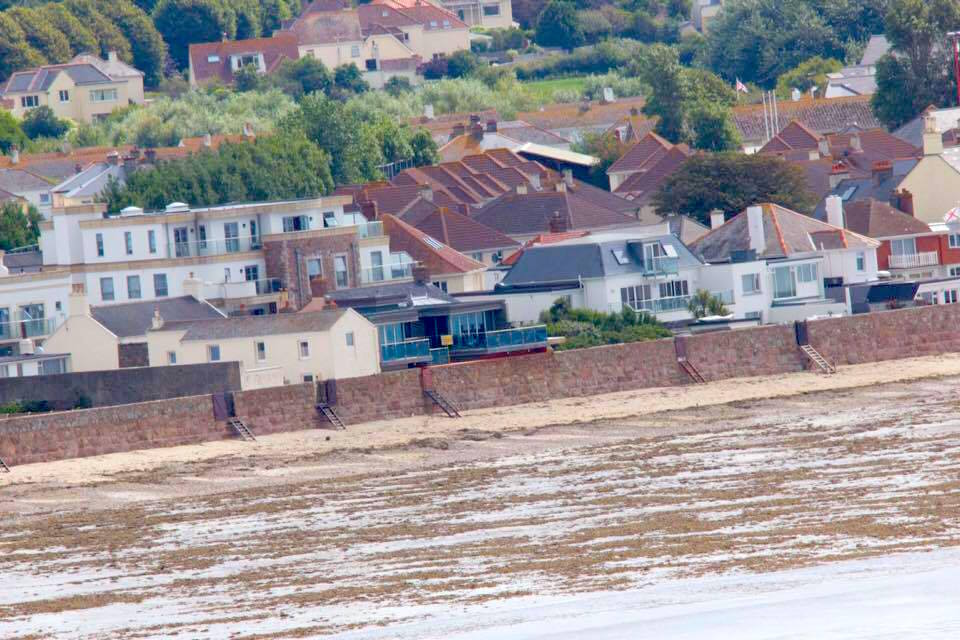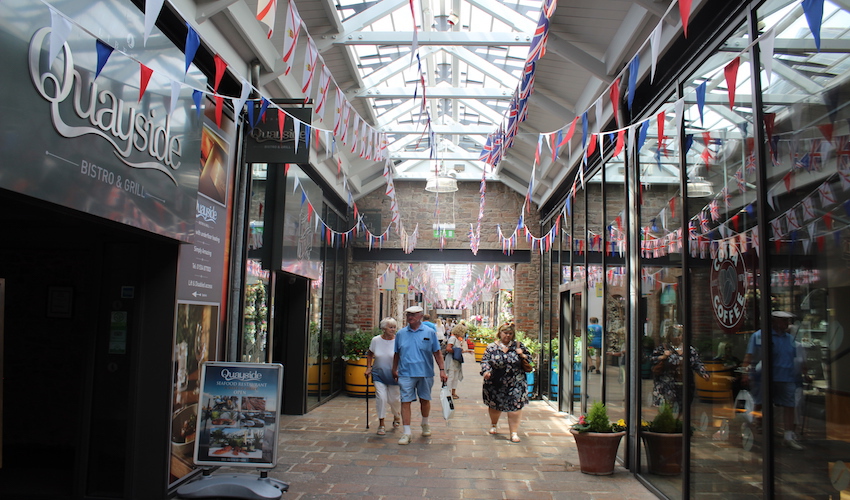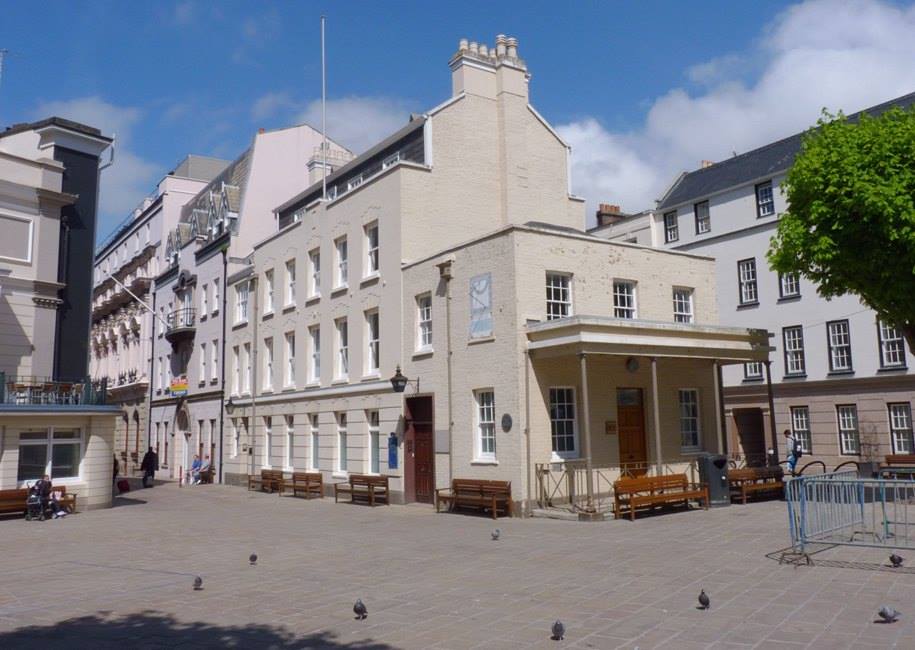


The problem with property is that it is not people. It will always be more palatable for a Government to save on soulless assets than services or HR. But, as ex-Infrastructure boss John Rogers once observed, “the long-term effect is… you finish up in real trouble.”
Indefinitely postponing upgrades to the most needy of the 500-strong portfolio paves the way for structural emergencies – and it’s reacting to those that hoovers up much of JPH’s modest (currently £13m) budget each year.
“You ask any property manager if they’ve got enough cash, if their budget is big enough; the answer, of course, will be ‘no’. Trying to eke out the resource that we have, trying to find ways of helping the estate to pay for itself to support itself continues to be a real challenge,” Tim Daniels, the recently-appointed Director of Jersey Property Holdings (JPH), which is responsible for looking after the Government's £1bn property portfolio, explains, echoing his predecessors.
In a sense, difficulty was written into JPH’s DNA. It wasn’t conceived with a mantra of “spend to save”, but, “dispose of, or extract better value from property” at a time when the Government needed to make millions of savings.
In recent years, that aim has led to some controversial decisions.

Pictured: "JPH’s role is a game of Tetris – making sure all elements of the portfolio lock together and that no gaps are left."
In 2018, there was uproar when it put 11 vergées of St. Catherine farmland, forming part of the Coastal National Park, up for sale. Then there’s the Foreshore saga. When the Queen gifted the strip between high-tide and low-tide to the island in 2016, JPH soon after started hassling sellers of properties ‘encroaching’ on the vague zone with gardens, balconies or sea wall steps for recompense.
Some on the receiving end argued this was opportunistic extortion from a cash-strapped department. Tim denies “money-grabbing” – besides, the takings go straight back to Treasury – and maintains “it’s a matter of principle.”
“If somebody pushed their garden onto FB Fields and sold their house… and took benefit of the fact of a bit more space, there’d rightly be an outcry. If somebody benefits from a bit more of the Foreshore… I do think there should be recognition of that, however small or paltry.”
He adds: “We’re on an island nine miles by five – I think it’s been mentioned before that very rarely do landowners go for a walk without giving a little kick to the boundary stone.”

Pictured: When the Queen gifted the strip between high-tide and low-tide to the island in 2016, JPH soon after started hassling sellers of properties ‘encroaching’ on the vague zone with gardens, balconies or sea wall steps for recompense.
Even if islanders were “innocently caught up” in foreshore issues, to JPH, such ‘negotiations’ should be treated no differently to the standard boundary ratifications it has been carrying out since its inception.
Indeed, just two years’ after JPH’s birth, Chief Minister John Le Fondré – then a Deputy and Assistant Treasury Minister with political responsibility for it – emphasised “the full value of land must be recognised”, going on to warn encroachers: “We want your money now.”
Criticism of that hardline approach in relation to the foreshore has prompted the development of a new policy – a ‘sliding scale’ compensation system drawn up with Law Officers’ support – due to be debated by States Members next year.
Another upcoming challenge is deciding the long-term fate of the former Police HQ. The Head Teacher of neighbouring Rouge Bouillon says it’s an obvious place to expand. The school sits in one of the island’s most “challenging” catchments, where many children come from homes without gardens, reflected in the fact that its pupils have the highest BMI of the island’s primaries.

Pictured: Tim Daniels was recently appointed as Director of Jersey Property Holdings.
Despite having burned down 30 years ago, a plan to replace the main fire escape has been repeatedly cancelled, while other maintenance work has been likened to “sticking plasters.” Not quite ‘putting children first’.
But Rouge Bouillon is facing a fight with Andium, which has the zone on a wishlist of 10 publicly-owned sites it would like to develop. Four years after the police left, the Government is still yet to determine its plan for the site – or indeed any of its properties.
The lack of an overall estate strategy has been a repeated criticism of JPH from the Comptroller and Auditor General, and more recently charity Les Amis, which complained that “systemic” issues have frustrated their efforts to build a complex needs unit.
The C&AG has also called for measurable, ambition-focused goals for the Government's property arm - a big mindset change for an organisation whose Infrastructure Department previously spent time measuring rainfall to understand the annual cost of treating sewage (the more it rained, the cheaper it was – hardly a goal one can aspire to).
Pictured: Ministers of the time might not have wished it, but endorsing the creation of the Waterfront complex at the turn of the Millennium spelt the end for Fort Regent.
Lastly, and perhaps most importantly, the C&AG emphasises: fail to get politicians on board, prepare to fail. That was the watchdog’s lesson from the Lime Grove fiasco nearly a decade ago.
Delays resulting from Ministerial concerns that the £8.75m price-tag the then-JPH Director had negotiated for the Green Street offices (which were intended to house a new Police HQ) was too high led the acquisition to fall through. In the end, a new station was built at a cost of £26m.
Poor communication between JPH and Ministers, and ‘silo’ thinking, can also lead to unintended consequences. Ministers of the time might not have wished it, but endorsing the creation of the Waterfront complex at the turn of the Millennium spelt the end for Fort Regent.
The newer, shinier complex would likely take much of its custom, so where was the strategy laying out its next step? Nowhere. In its place, was a future maintenance bill totalling millions.
Such examples show how, in essence, JPH’s role is a game of Tetris – making sure all elements of the portfolio lock together and that no gaps are left. Playing that game now is the Corporate Asset Management Board, which was set up on the C&AG’s recommendation and is expected to finalise its estate strategy this autumn. It then feeds its findings to Ministers via the political Regeneration Steering Group. Right now, much of its work is about reprioritising projects in light of covid, consulting with the Construction Council on which will provide the best fiscal boost.
Pictured: The future of the Fort has been one of the most hotly disputed topics regarding JPH's properties.
In normal times, the benefit of the group is that it gets senior civil servants from different departments working together to overcome property hurdles – in contrast to a previous tendency for each to jealously guard its own assets.
We’re therefore likely to see more space-sharing and multi-use developments in future, Tim explains – whether it’s opening up parts of the “world-class” new Les Quennevais School to non-students or building a housing estate featuring a medical or community hub.
“How many birds can you kill with one stone?” he says of the new ethos.
In parallel to this, more planning driven by data, like migration statistics, is happening now than before.
“What is the demographic of the population in the coming years? Are we likely to need more schools or fewer? Where might those schools need to be? Instead of saying, ‘We’ve got a challenge next year’, we can say, ‘In five or six years, here’s what we might be requiring.’”
JPH’s maintenance approach is also shifting from reactive to proactive. Using new software from Concerto that maps and tracks flush frequency across all washrooms, it managed legionella risk across the estate during lockdown.
Meanwhile, Liberate and other charities are helping Government property become disability-friendly. It was initially feared that States Members had voted for legislation that the Government itself would struggle to comply with (and afford, with an estimated cost of £10m for the adjustments).
But Tim says the team has since learned it’s “not just about building ramps and putting hearing loops in – all of which we’ve done or are doing – but more about training customer-facing staff” to ensure they can deal with all other needs appropriately.
If politicians approve Overdale this week as the preferred new one-stop-shop hospital site, then the next challenge will be deciding what to do with the vacant element of the health estate.
The other big-ticket item on the agenda is the new Gov HQ – where it should be, what it needs, and how big it should be (the original plan was 11,000sqm, but is being re-evaluated in light of the pandemic).
Interestingly, Tim hints that former base Cyril Le Marquand House is not out of the running, though “it would be redeveloped as part of the proposal” given its “parlous state”, which includes lifts so old that replacement parts cannot be ordered.
Moving 1,600 employees under one roof means vacating old premises which could generate up to £28.5m if sold. Environment workers have already left South Hill, and States of Jersey Development Company’s plans for new housing there are underway.

Pictured: Tim hinted that a redeveloped Cyril Le Marquand House was not out of the running for the new Government HQ.
And the arms-length organisation’s involvement with JPH may be about to increase. Chief Executive Charlie Parker told a Scrutiny Panel over summer that he was investigating whether SOJDC could take over some of JPH's responsibilities, ranging from management to land disposal.
Regardless of who’s in charge, Tim says the principle of selling off “bits and pieces” of the public estate should only be looked at “as a last resort.”
“The intention is a way through long leases or collaborative working to maintain the property on the public books but at the same time generate an income from it. Anything we can do to avoid selling off the estate is something we are very keen to explore.”
A lease of more than 100 years was used in the case of Liberty Wharf - an abattoir-turned-shopping centre controlled by SandpiperCI. This is in contrast to the Central Market, which JPH still manages and acts as landlord to its tenants.
While there’s a drawback in having to maintain the Victorian premises, retaining full ownership does allow Government to directly assist its small businesses by keeping rents low or even deferring them at times of need, such as during the pandemic.

Pictured: A 100-year lease was used in the case of Liberty Wharf - an abattoir-turned-shopping centre controlled by SandpiperCI.
“…Government can’t be purely commercial. We have a responsibility to the community. Have to find ways to support organisations that might be challenged to exist without government support… While real estate is limited, there has to be a balance between exacting the full commercial terms of a transaction and doing the community a service,” Tim muses.
Recalling his own potato merchant grandfather wandering down to the market, Tim speaks of the importance of safeguarding key assets for generations to come. One premises he is particularly pleased to be able to play a part in rescuing is the Royal Square’s Piquet House, which has survived disposal three times.
The listed British guard house, which was originally built to help protect against French invasion and was used by military police until 1924, is now due to be converted into a family courtroom.
“Having been involved in the Royal British Legion, we had a pop-up shop in [there] and that’s a building I always thought a lot could be done… I’m really looking forward to the day we can bring it back to its former glory and return it to community use.”

Pictured: Piquet House has survived disposal three times, but plans are finally underway to renovate it.
In Tim’s mind, JPH should aspire not only keep the island’s biggest treasures shining, but to identify and polish long-lost gems.
If he had his way, a hobbit-like bunker at St. Catherine that acted as a gunpowder store when the breakwater was built would be on the restoration list.
“It’s a mouldy miserable little room, but in its context of St. Catherine’s Breakwater and the history of the island, it’s got a huge value.”
Tim continues: “There are loads of these little anomalies that you go past every day. 99.9% haven’t got a clue what it is but it’s a special piece of history… It’s something that we’ve got to maintain and make sure its there and it’s something we look after for the future.”
Comments
Comments on this story express the views of the commentator only, not Bailiwick Publishing. We are unable to guarantee the accuracy of any of those comments.